Vietnam 2023 guide: Best cities to visit and best side-trips to take
For every exciting Vietnamese city, there’s a peaceful oasis nearby. Here’s how to find the best of both worlds.
Lifestyle
Don't miss out on the headlines from Lifestyle. Followed categories will be added to My News.
Vietnam is guarded by dragons, decorated by citadels, spiked by skyscrapers, awash with addictive cuisine, and embellished by wondrous scenery. Home to 100 million people, this Asian nation is also developing at a blazing pace matched by few countries.
Even the pandemic didn’t halt its surge. This I learned in March while traversing Vietnam south to north, from Ho Chi Minh City to Hue, Hoi An, Da Nang and Hanoi.
It was my 14th visit, but the first in almost four years. Vietnam is so restless that during my absence even ancient sites were updated, to say nothing of its ever-modernising cities.
Those metropolises are so hectic and engrossing that, within a week, they leave me pleasantly drained. To regain my vibrancy, I pair these urban escapades with excursions to Vietnam’s tranquil spots. There I drift along rivers, nap on silky beaches, hike serene mountain trails, play elite golf courses, and wander jungled ruins of historic kingdoms.
With Vietjet offering new direct flights to Vietnam from Sydney, Brisbane and Melbourne, along with Bamboo Airways (Sydney and Melbourne), it seems timely to offer a guide to those five cities, as well as peaceful side trips to take from each one.
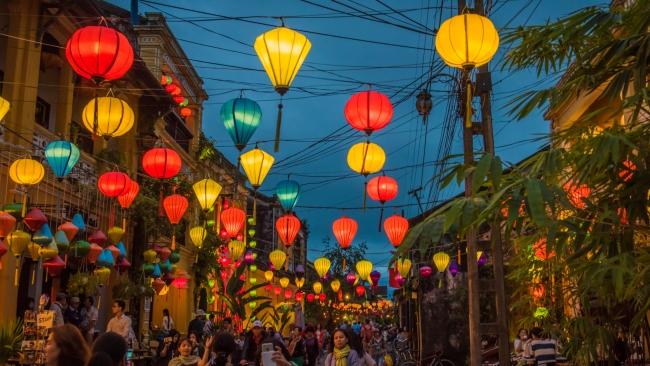
HOI AN
High energy
Hoi An’s riverside Ancient Town has few peers in Southeast Asia. Only Luang Prabang in Laos marries heritage architecture with a picturesque location as well as Hoi An. Although it’s Vietnam’s most touristy destination, the Unesco-protected Ancient Town is undeniably photogenic, especially each evening, as sunlight makes way for the colourful glow of thousands of paper lanterns. They hang from the Ancient Town’s 1100 historic mansions, shophouses and temples, some up to 400 years old. Standouts include the 16th century Japanese Covered Bridge (Lai Vien Kieu), polychromatic Phap Bao Temple and Tan Ky heritage house.
Hoi An’s iconic lanterns make a terrific souvenir. Buy them at the daily night market or make one yourself during workshops run by Hoi An Handicraft Tours.
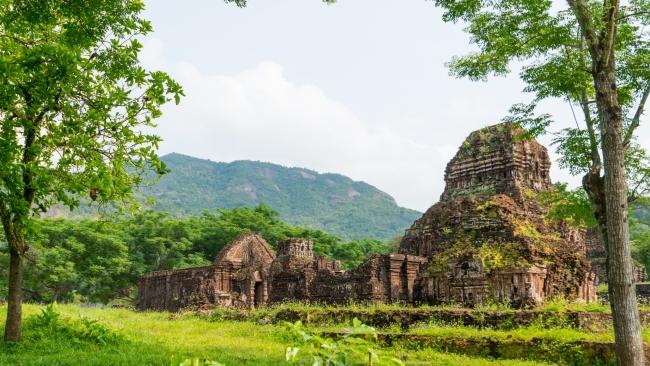
Peaceful
My Son Sanctuary was built by the Vietnamese, shaped by India, and attacked by China, Cambodia and Indonesia. Now the 1600-year-old capital of the Champa Kingdom is refreshed thanks to a six-year restoration project. In January, Vietnam unveiled the repaired towers and temples, one hour west of Hoi An.
My Son was the spiritual, military and political hub of Champa, ruling swathes of Vietnam for a millennia. Tourists can now wander the site. Join one of Hidden My Son’s guided tours to learn how this kingdom fought bloody wars with regional powers.
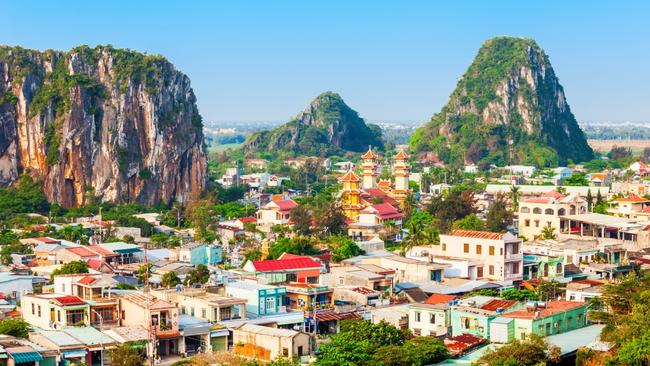
DA NANG
High energy
Da Nang is the most family-friendly city in Southeast Asia behind Singapore. Home to 1.2 million people, it has ample attractions, terrific shopping, varied night-life, and wide accommodation options. But what makes it so suitable for mums, dads and kids are myriad attributes other cities in this region lack.
Da Nang is modern, organised, clean, peaceful, has minimal traffic, and is hemmed by natural splendour, with a sparkling coastline to the east, and verdant hills to the west. The key attractions of its CBD – Da Nang Cathedral, Museum of Cham Sculpture, Vincom Plaza shopping centre, and pretty Apec Park – are only 3km inland from a 30km stretch of interrupted, attractive beaches.
In 10 minutes tourists can taxi between those urban delights and a blissful oceanfront hotel, like five-star Olalani Resort and Condotel where, for about $125 a night including buffet breakfast, two adults and two children can stay in a 64 sqm room with two queen beds, and enjoy direct beach access.

Peaceful
Perched 1500m above sea level on a forested mountain 45 minutes west of Da Nang, resort town Ba Na Hills heightens that city’s family appeal. Parents can savour affordable spas, plush Ba Na Hills Golf Club, picturesque Linh Ung Pagoda, and tasting sessions at Debay Wine Cellar.
Kids will cherish Sun World Ba Na Hills, a giant resort and theme park, with thrill rides, indoor rock climbing and a wax museum. Teens, meanwhile, can fill their social media feeds with unique images from many photogenic locations. These include five cable car routes, Le Jardin D’Amour Gardens, a recreated French village, and a dramatic walkway held aloft by giant hands called Golden Bridge.

HUE
High energy
While most Vietnamese cities have zoomed into the future, Hue has stayed rooted to its heritage. Eight decades since it finished a long stint as national capital, this central coast city still revolves around its commanding Imperial City. Protected by mythical dragons, ringed by lofty walls and lined by royal residences, this is among Asia’s finest citadels.
Now its tourist appeal is even greater due to new walkways atop the outer walls. From there visitors can peer east to Hue’s buzzing Dong Ba Market, west to the seven-storey Thien Mu Pagoda, or south to Ho Chi Minh Museum, Hung Vuong shopping area, and Hai Ba Trung food street.
Further in that direction are seven grand imperial tombs, including tourist favourite, the mausoleum of Emperor Tu Duc. Finish the day looking down on all these sites from the ritzy Zenith Skybar at the 34-floor Melia Vinpearl Hue hotel.
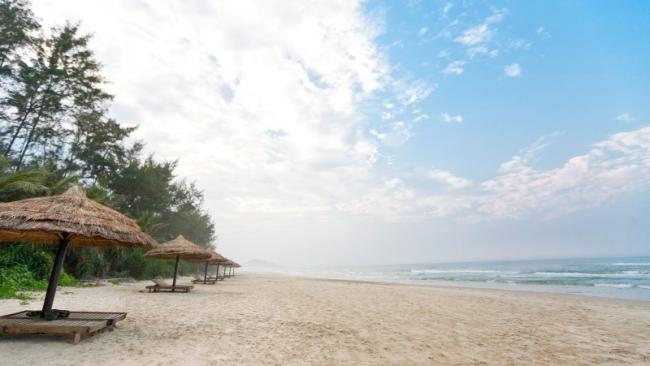
Peaceful
Lang Co is in the sweet spot for a beach destination. It’s not yet overdeveloped, but has sufficient accommodation, dining and shopping options so as not to be boring. This resort town, 55km southeast of Hue, lies between the South China Sea and shimmering Lap An Lagoon.
Lang Co is popular with domestic tourists but its lack of international renown has kept prices low. At the four-star, seafront Lang Co Beach Resort, twin rooms including buffet breakfast start from just $55 a night, with palatial, 164 sqm two-bedroom villas from $360. In between beach lazing, go fishing on the lagoon, or savour the luxury spa and 18-hole golf course at Angsana Lang Co Resort.

HANOI
High energy
Hanoi may just be Asia’s finest city. Few can compete with its rewarding blend of ancient sites, art galleries, energetic night-life, splendid parks, memorable food and extraordinary value. For $200 a day in Hanoi, you can stay at a five-star hotel, eat three superb meals, catch taxis all over town, and visit multiple attractions. Try replicating that in Tokyo, Singapore or Hong Kong for less than $500.
History oozes from Hanoi’s magnificent citadels, Thang Long and Co Loa, which were once the lavish headquarters of powerful dynasties. Equally majestic are its key Buddhist sites, the sprawling Temple of Literature, 15th century Quan Su Pagoda, and 1500-year-old Tran Quoc Pagoda, perched on an island in scenic West Lake.
Less relaxing, yet key to understanding Vietnam, are its impressive museums. Peruse the Vietnam Military History Museum, Ho Chi Minh Museum, Vietnam Museum of Ethnology, and Vietnam National Fine Arts Museum to learn about the country’s conflicts, creativity and politics.
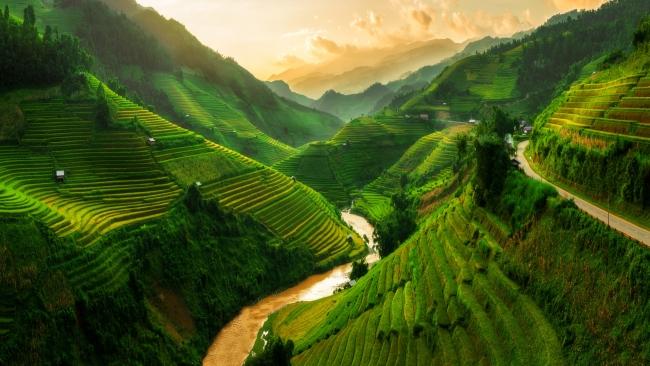
Peaceful
Sapa’s natural beauty is mesmerising. Scattered across a mountainside, above an emerald valley of rice terraces, this town 250km northwest of Hanoi offers never-to-be-forgotten views. The colourfully clothed Hmong, Giay, Tay, and Red Dao people were so taken by this scenery that these hill tribes arrived here more than 300 years ago and never left. Their beautiful villages line the superb hiking trails which weave around Sapa.
Sapa can be reached by train or bus. Catch the eight-hour Chapa Express sleeper train, which departs Hanoi at 10pm and has four-berth cabins from about $60 one way, including a bus transfer to Sapa from the arrival station of Lao Cai. Return to Hanoi on one of many morning buses (from about $30 for a six-to-seven-hour trip), to absorb the undulating scenery.
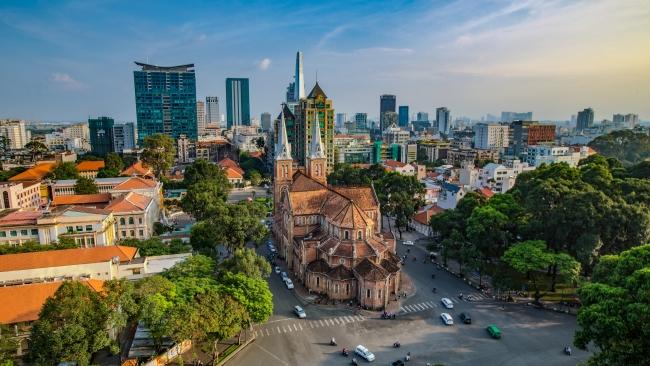
HO CHI MINH CITY
High energy
Travellers on a diet should sidestep Ho Chi Minh City, because its cuisine stalks you. Each day you’ll leave your hotel and enter a citywide banquet. Walk left or right to pass restaurants serving suon nuong pork chops, vendors wedging grilled meat into banh mi baguettes, and carts selling banh xeo crêpes that bulge with prawn.
Shed these calories by exploring the country’s largest Chinatown, Cholon, or treading the more orderly streets of District 1 to admire its colonial jewels, such as Saigon Opera House, Saigon Notre-Dame Cathedral and Saigon Central Post Office. Combine all the above by eating com tam broken rice in the garden restaurant of French-era landmark, the 1920s Rex Hotel.
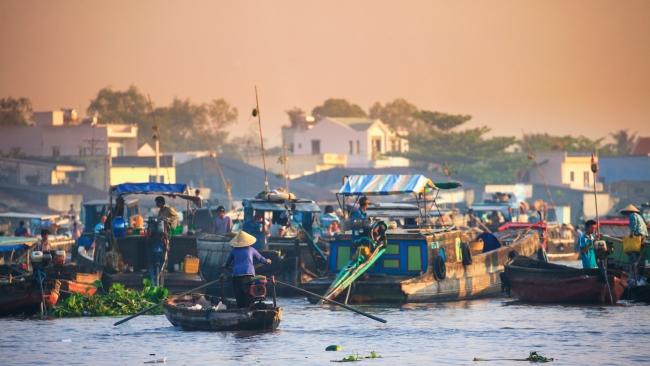
Peaceful
Bangkok’s famed floating markets are charmless tourist traps compared to those in Can Tho, a quaint riverside city three hours southwest of Ho Chi Minh City in the Mekong Delta.
Phong Dien market, 20km from the city centre, sees dozens of row boats collect on the placid Phong Dien River to trade fresh produce and local treats, like ice-cold sugarcane juice.
Cai Rang market bobs on that same waterway, but much closer to Can Tho, and so is a tad more touristy.
Both floating markets are charming, calming and photogenic. Book a private, 5½ hour boat excursion with Can Tho River Tour to cruise to both sites.
Originally published as Vietnam 2023 guide: Best cities to visit and best side-trips to take




